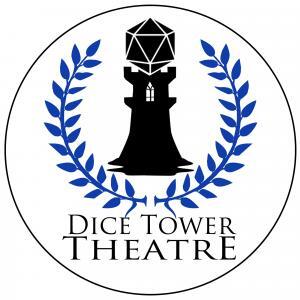Scrying
Bard, Cleric, Druid, Warlock, Wizard - 5 Level Spell
School: Divination
Casting Time: 10 Minutes
Range: 120 ft
Components: Verbal, Somatic, and Material
Duration: 10 mInutes
Attack/Save: WIS
Reference: PH 273
Concentration
You can see and hear a particular creature you choose that is on the same plane of existence as you. The target must make a Wisdom saving throw, which is modified by how well you know the target and the sort of physical connection you have to it. If a target knows you’re casting this spell, it can fail the saving throw voluntarily if it wants to be observed.
| Knowledge | Save Modifier |
|---|---|
| Secondhand (you have heard of the target) | +5 |
| Firsthand (you have met the target) | 0 |
| Familiar (you know the target well) | -5 |
| Connection | Save Modifier |
|---|---|
| Likeness or picture | -2 |
| Possession or garment | -4 |
| Body part, lock of hair, bit of nail, or the like | -10 |
On a successful save, the target isn’t affected, and you can’t use this spell against it again for 24 hours.
On a failed save, the spell creates an invisible sensor within 10 feet of the target. You can see and hear through the sensor as if you were there. The sensor moves with the target, remaining within 10 feet of it for the duration. A creature that can see invisible objects sees the sensor as a luminous orb about the size of your fist.
Instead of targeting a creature, you can choose a location you have seen before as the target of this spell. When you do, the sensor appears at that location and doesn’t move.
The material component is a focus worth at least 1,000 gp, such as a crystal ball, a silver mirror, or a font filled with holy water. The material component is not consumed and can be used again.
My Comments:

“Magic Mirror on the wall, who is the fairest one of all?” image by Duchess Flux.
Scrying can be a problematic spell to adjudicate, as a DM, and is an exciting information gathering spell for players when they hit 9th level. In my games, I almost try to keep Scrying as a spell entirely for the DM. I don’t keep players from learning it and using it, mind you, but I have to start pulling out a lot of stops to keep it from ruining the mysteries that I like building for them. So then, how do we go about that? I’m going to break down what I do as a DM for both NPCs and PCs, as well as the ways I have seen it go well – and poorly – for players.
As a storyteller and author, I mostly find myself being the Dungeon Master. Most of the time that’s great, because I love making a world complex and meeting the players where they are. Scrying is a great addition to my meta-game toolbox; the bad guys often have it, and it’s a great way to put a wrench in their plans (if a player fails a save) or to alert them that there’s an enemy doing something against them (if they make the save). I’m not even above gaming the dice when they don’t make the saving throw because it causes much more mayhem and fear amongst a party as they try to figure out which adversary is trying to scry on them and why. Therefore, as a DM, I primarily use Scrying as a plot device and usually don’t pay attention to the modifiers in the spell description or worry about whether or not the players save.
However, eventually your newly minted 9th level Wizard will want to buy themselves a crystal ball and start viewing their enemies from afar and try to beat you at your own game. And that’s when you do want to pay attention to the modifiers and saves. It’s also one of the biggest hurdles from various people I’ve read online. What does it mean to be “familiar” with someone? What if the possession you have is really old? How long does a lock of hair still retain the “essence” of someone? Honestly, I usually also hand-wave this. If a player goes to the trouble of locating some kind of focus like a lock of hair or nail-clippings, that amount of role-playing and dedication to the story deserves the bonuses. It can also become an adventure or quest all in itself, like if the party is searching for someone who faked their death and go to the trouble of locating a piece of their estate that will still connect them to the caster.
If hand-waving like that isn’t your bag, however, how do you decide if you’re familiar with someone? What if you knew them long ago, but they have changed so much as an adult? If you have a piece of their clothing, but that was when they were a peasant and now they’re nobility, does it still have a connection? These questions can bog down playing, and unless your table really enjoys the nuances of such conversations, just make a ruling and move on. If you’ve met the target and had a lengthy conversation or battle with them, you’re familiar. If you’ve met them, but just saw them across a crowded battlefield, you’ve got firsthand knowledge. Just heard of their reputation? Secondhand.
If you’re a player and you want to use Scrying, my biggest advice to you is: give your DM a break. One of the biggest things to remember is the duration and casting time on scrying means that you can really only use it out of combat, and you have to time your scrying just right to get any information. If all you’re doing it trying to find out where someone is, then that’s great, it’s a way of gathering information for your party. If you’re scrying a location to see when the adversaries get there so you can set off an ambush, also a lovely and rewarding way to use the spell!
“Dungeon Masters want to (or, in my opinion, should) give you a good story to interact with, and just giving you the answers ruins their fun and ultimately ruins your enjoyment of the reveal”
On the other hand, if you’re trying to foil someone’s plans, or solve a mystery, let your DM give you what information they want to forward the plot. Therefore, don’t get pissy if it’s not precisely what you planned on. Dungeon Masters want to (or, in my opinion, should) give you a good story to interact with, and just giving you the answers ruins their fun and ultimately ruins your enjoyment of the reveal.
One last note for those games where Scrying is going to be a big part of play: both PCs and NPCs have access to the spell Nondetection as a 3rd level spell (which you qualify for long before you get Scrying as a spell). Nondetection simply negates the ability to be scryed upon. Crafty scoundrels will use this before doing anything incriminating, and that goes for players (though it only affects one party member at a time). The spell only lasts eight hours, so timing is everything. But again, if you’re Scrying someone affected by Nondetection and the DM tells you that something is blocking your attempts, that could be a clue that they’re up to something! Plots within plots!

